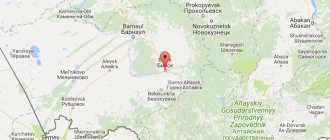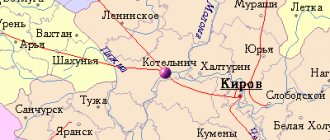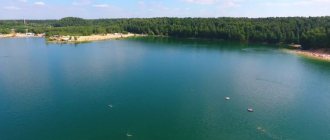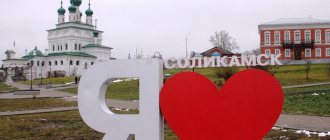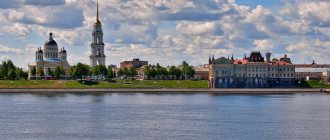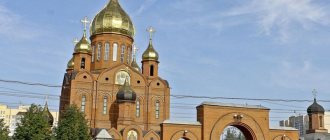Photo facts. Merchant Biysk: a lush past and an unenviable present
Mansion of merchant Assanov
Mansion of the merchant Assanov.
Oleg Bogdanov
The building was built according to the design of the chief architect of Western Siberia, Konstantin Lygin, in 1914 for the Biysk merchant Nikolai Assanov.
Assanov is one of the richest and most authoritative people in the city. Conducted trading activities with Mongolia. He was a trustee (sponsor) of a women's gymnasium and supported the Society for the Development of Russian Horse Breeding. He was a member of the leadership of many public organizations in Biysk. He was a full corresponding member of the Imperial Academy of Sciences. He helped financially with scientific expeditions to Mongolia. It is believed that Assanov saved Przewalski's horse for wildlife. One of the representatives of the breed was later presented to Emperor Nicholas II.
Nicholas II on horseback.
With the beginning of troubled times, Assanov attempted to emigrate, but was caught by partisans and taken back to Biysk. He died in the 20s in a hospital at the city prison. Some people still wonder: where are Assanov’s wealth hidden?
Mansion of the merchant Assanov.
Oleg Bogdanov
Even more tragic was the fate of his wife Maria. In better times, the Assanov couple traveled around Europe in style; Maria Andreevna always wore expensive dresses, the train of which was held by servants. However, with the advent of the revolutionary regime, Assanova was kicked out of the mansion. She lost everything and was homeless for some time, partially losing her mind. There is evidence that in the 20s, Cheka officers tortured Assanikha, as she was popularly called, by burning her body with cigarettes. The former merchant's wife died in 1958 in poverty and oblivion.
In the mansion of the merchant Assanov.
Oleg Bogdanov
As for the mansion itself, later one of the headquarters of Admiral Kolchak was located here, and then the headquarters of special forces units of the Red Army (a unit of the Cheka). The basements were adapted into prison dungeons. There is still a glacier room there (in which Assanov once kept the carcasses of sheep), in which sentences were carried out - those undesirable were shot. In the 70s of the last century, suicide notes of prisoners were discovered on the walls of the basements. But according to the party's instructions, they were erased.
During the Soviet period, the district committee of the CPSU was located in the former Assanov mansion. Now there is a local history museum named after. V. V. Bianchi. By the way, last year the Moscow Museum of Russian Art Nouveau hosted a photo exhibition dedicated directly to this building.
City Drama Theater
Drama Theater.
Oleg Bogdanov
Construction according to the design of the Barnaul architect and engineer Nasovich was completed in 1916.
Merchants Pavel and Pyotr Kopylov lived in Biysk. Pavel Andreevich left his entire fortune - about 300 thousand rubles - to his nephew Anton Kopylov, who by that time had made a brilliant military career. In 1909, Lieutenant Colonel Kopylov was transferred as a military commander to Biysk and, according to his uncle’s will, began the construction of the People’s House, which later became a theater.
During the Second World War, the Lensovet Theater troupe gave performances there.
Makaryevsky numbers
Makaryevsky numbers.
Oleg Bogdanov
An iconic place in the city - a prestigious hotel with a restaurant and live music, elite rooms.
The writer Vladimir Obruchev left memories of Makaryev’s numbers, who in 1914 traveled with his son to Altai: here they did not let you sleep until the morning - the orchestra was playing, there was a party.
The people hanging out at the hotel were mostly locals - the golden, as they would call it now, youth and the richest people of Biysk, including the eminent merchant Assanov.
The main entertainment for visitors was card games for money. They won and lost entire fortunes overnight. For example, there is information about the merchant Dobrokhodov, who won 30 thousand rubles. But it was not customary to put hard money into commercial circulation, so Dobrokhodov gave the entire amount for the construction of a school. Nowadays there is a dental clinic here.
Abandoned Morozov mansion
House of the Morozov merchants.
Oleg Bogdanov
Built at the end of the 19th century for the merchant couple Alexei and Elena Morozov, immigrants from the Vladimir province.
Morozov was engaged in large-scale grain trading. He owned an entire shipping company. The merchant purchased grain throughout Altai and floated it down the river to Tyumen. Each such expedition brought Morozov income up to 300 thousand rubles.
In 1895, Alexey Morozov died and his wife took over all matters. She didn’t know how to read and write, so instead of signing the documents she put a family seal. Morozova was also remembered for distributing large bills to the poor, scattering them from the balcony of her mansion. After the death of Morozikha in 1908, the Society of the Heirs of Elena Morozova was established. The family’s fortune at that time was estimated at 1.5 million rubles. In addition, there were five other operating enterprises.
Under Soviet rule, a city court operated in the Morozov mansion.
Gilev mansion
Gilev mansion.
Oleg Bogdanov
The first stone building in Biysk, built in 1860.
The house belonged to Vasily Gilev, one of the founders of the Chui trade. He is known for the fact that, with the permission of the Tomsk governor, he went to northwestern Mongolia and agreed with the local authorities to organize a trading business.
The second wing of the building appeared later - in 1914. It was built by the former clerk of the merchant Gilev Ignatiev. There is evidence that Ignatiev subsequently fraudulently took possession of the capital and property of his employer.
The building of the first Biysk power station
The first power plant.
Oleg Bogdanov
Built at the expense of the Morozov merchant family in 1900. This was the third station in the entire territory of Western Siberia; equipment was installed at the facility.
Now this power station is associated with Biysk legends about dungeons that permeate the old part of the city. Under the station there are large underground technical communications.
Nikolaevskaya gymnasium
Nikolaevskaya gymnasium.
Oleg Bogdanov
Built with funds from the Morozov family. At its base there are many gold and silver coins. The children of major Biysk merchants studied at the gymnasium.
The building is associated with two historical figures. Firstly, the future Prime Minister of Kolchak, Viktor Pepelyaev, began his career here. Here he taught, and later became a deputy of the State Duma. In 1920 he was shot along with Kolchak.
The second figure is Yuri Kondratyuk (aka Alexander Shargei, a former Denikin officer who hid his past), author of the famous book “The Conquest of Interplanetary Spaces.” In the USA he is revered, just as Tsiolkovsky is in Russia. The Americans erected a monument to Kondratyuk at Cape Canaveral.
Sychev's House
House of Sychevs.
Oleg Bogdanov
The building was built in 1910 for the influential Biychan Mikhail Sychev. So, in 1895 he served as city mayor. Sychev also donated most of the money for the construction of the Assumption Cathedral. Legend has it that he himself chose the site for the construction of the temple, and then served as its headman for 18 years. Pilgrims and holy fools often found shelter in Sychev’s house.
No less famous was Sychev’s son Mikhail Mikhailovich, who was popularly nicknamed Minka the Fool. He received his education at a Swiss boarding school. He returned to Biysk in 1912 as a polished European dandy. He had the first passenger car and motorcycle in the city. Minka is remembered for making a bet with his father’s clerks: “Guess how many geese, chickens and other living creatures I will run over with my car at full speed. You guessed it – I’ll drive you for free or give you money. You won’t guess - carry me all day like a king in your arms.” And the townsfolk themselves threw poultry under his wheels in order to get good money from Duroplyas, fortunately Minka paid generously. He ended his days in Paris, working as a driver.
Now in the Sychevs’ house there is a library of a pedagogical university.
Firsovsky passage
Firsovsky passage.
Oleg Bogdanov
Entrepreneur Andrei Firsov managed to lose big at cards in a gambling house in one of the European countries. And in retaliation it is not clear to whom, perhaps fate, built the largest arcade in Biysk, similar in architecture to that same European casino.
Firsov Passage was considered the most luxurious store in the city. And the clerks had to be unmarried (so that the family did not interfere with work) and dressed in St. Petersburg fashion.
Firsovsky passage.
Oleg Bogdanov
Andrei Firsov himself loved to throw grand dinners on the banks of the Biya. The entrepreneur invited all his friends to the belly festival. And it was Firsov’s food that ruined him: having suffered from typhus, he was on a strict diet, and then, with the doctors’ permission, he decided to have lunch - he ate several dozen pies at once, washing them down with a bucket of well water. He died from a volvulus.
Currently, the burned building of Firsovsky Passage has been acquired by a private investor. His plans are not yet known.
Data
- The most valuable monuments in Biysk are concentrated in the area of Tolstoy and Sovetskaya streets. This is the historical part of the city.
- 77 small and medium-sized businesses received state and municipal support in 2015.
- 23 banks operate in Biysk
The editors would like to thank Dmitry Eroshkin, a researcher at the historical department of the Biysk Local Lore Museum named after V.V. Bianki, for his assistance in preparing the material.
How it was. Education, healthcare and culture in Biysk at the beginning of the 20th century
The degree of development of the socio-cultural sphere of a country, region or individual city gives an idea of the quality of life of its residents. At the end of the 19th century, the population of Biysk began to grow rapidly, educational and cultural institutions appeared, libraries and pharmacies opened. This happened with the active participation of the merchant class. 150 years have passed since then. It’s interesting to look back, compare, draw parallels with today.
In the post-reform years, Biysk was a small town (the population in the late 1870s was 6,800 people), a trading center in an agricultural district, and trade with Northwestern Mongolia also took place through Biysk.
The weak development of the economy and the distance from the largest cultural centers of the region also determined the weak development of the sociocultural infrastructure. The whole thing could be described very briefly: “In Biysk there are two parish schools: men’s and women’s, as well as a military hospital and a hospital with 25 beds, built at his own expense by the merchant Sokolov and donated by him to the city. For the maintenance of schools, as well as for the benefit of the infirmary, the city society allocates a certain amount annually” (in 1875 - 597 rubles).
Subsequently, the development of the city accelerated: the population grew rapidly, masses of peasant migrants were sent to the county, the turnover of domestic and foreign trade increased, industry developed, and city incomes grew. All this affected the progressive development of sociocultural infrastructure.
Education
The first school (for boys) in Biysk was opened only in January 1860, with 53 students, and in 1861 a girls' school was opened. According to data from 1864, 69 children were studying in two schools. Later, several more schools began to operate in Biysk; by 1890, there were 8 educational institutions in Biysk, of which three were secondary and five were primary. This is a city 2-year school (opened in 1880), a women's pro-gymnasium (founded in the same year), a catechetical school (1883), the Forstadt men's (1880) and women's (1885), the Vladimir women's (1861), the Alexander Nevskoe church -parish (1887), primary missionary (1886) schools.
Famous traveler G.N. Potanin, who visited the city in 1877, wrote about education in Biysk: “The number of boys studying is constantly increasing and has now reached 170 people... However, despite all the care of Mr. Sakharov (the mayor at that time), the school is poorly furnished and does not have good classrooms and libraries.”
Prominent philanthropists, merchants-entrepreneurs, such as the Morozovs, Sakharovs, Assanovs and others played a major role in education.
The newspaper “Tomsk Provincial Gazette” wrote in 1882: “M. Sychev built a building for the Forstadt City Men's School at his own expense. Previously, the school was in a private house, a cramped, dirty apartment consisting of three rooms, with unpainted floors, low ceilings without any ventilation; 100 students studied in such conditions. The lack of a clean yard did not allow students to breathe fresh air. The new building was the opposite of the first, two large rooms, a library, a laboratory and most importantly a large spacious courtyard.”
In 1910, the following educational institutions operated in the city: Nikolaev women's eight-grade gymnasium, located in its own, “fully adapted” building; a men's gymnasium consisting of three classes opened in 1909, a city four-class school with a church attached to it, built at the expense of the famous philanthropist E.G. Morozova, a six-year catechist school at the Bishop's House (approaching in its program to theological seminaries), 11 parish schools, 6 parochial schools and a school of the Society for the Care of Primary Education. In total, there were 37 educational institutions in the city (including 2 secondary schools), in which 1859 students studied.
Pedigree of the streets
Each era leaves its mark on the history of cities. Biysk, the oldest settlement in the Altai Territory, was no exception.
Today, the younger generation of townspeople hardly thinks about why this or that street bears this particular name and what was located in ancient buildings, for example, a century ago. The famous Biychan resident, historian Pavel Kovalenko knows many interesting facts about the life of the science city. He invited us to take a walk around the microdistrict called Kazanka.
Street with ancient history
Our guide decided to start the tour from Irkutsk:
— Irkutskaya Street is one of the oldest in Biysk. It began to take shape in the 1880–1890s. It received its name not in honor of a geographical object - the city of Irkutsk, as many people think, but in memory of St. Innocent, Bishop of Irkutsk, especially revered in Siberia. He lived at the end of the 17th and beginning of the 18th centuries in different regions of Ukraine and Russia, but by the will of God he ended up in Siberia on the Angara, where he was canonized for his deeds.
From archival documents, Pavel Kovalenko learned that the main development of the street dates back to the end of the 19th - first half of the 20th centuries. But even today you can see that one-story residential private houses predominate here. There are four ancient two-story buildings on Irkutskaya, three of which are used for housing. The total number of buildings with their own serial number is 124.
In pre-revolutionary times and the first decades of Soviet power, there was a Kurkovs’ baking workshop on the street - now a brick one-story building in the depths of the estate at No. 36. By the way, in the estate house itself there was a sausage shop, as well as an artel for the production of woven carpets. Nearby, in building 20, there was a grain mill or, in modern terms, a small grain processing plant. Local residents made arcs and sleighs, were engaged in decorative wood carving and blacksmithing.
In the two-story brick building at number 28a, where the Central City Veterinary Hospital is now located, at the end of the 19th century lived the family of the former owner of the iconostasis workshop Arkhip Aleksandrovich Borzenkov, created on the initiative of Bishop Macarius Nevsky of Biysk in 1885. A two-story workshop building built at the end of the 19th century has been preserved nearby in Sredny Lane and today cries out for help with its ownerless appearance.
The building of the iconostasis and icon painting workshop of A. Borzenkov. 1900
— Arkhip Borzenkov was a talented, self-taught craftsman. A tradesman, a native of the peasantry of the village of Srostki, Srostinsky volost, Biysk district, led the workshop until its closure in the 1920s. Experts in their field carried out orders for painting icons, carving iconostases and wooden house carvings, as well as building churches. It is interesting that since 1894, Grigory Choros-Gurkin worked here as an icon painter, who later became a famous and talented Altai artist.
Irkutskaya is the most attractive street on the territory of Kazanka, which has preserved ancient monuments. Even today they are attractions of the city and objects of educational tourism. Among the buildings, eight have the status of architectural and historical monuments of regional significance of the late 19th - early 20th centuries. The bishop's house and the building of the former Biysk Missionary Catechist School, which today houses the Biysk Orthodox School in the name of the Holy Righteous John of Kronstadt, are located in the depths of the quarter. The mentioned monuments include the mansion of the former owner of the iron foundry, entrepreneur Yagovtsev, and the houses of merchants Mikhail Kurkov and Chekanov.
— The facades of two-story and one-story houses at numbers 20 and 20a are attractive due to their ancient architecture. As old-timers recall, at the beginning of the 20th century there was an inn and office of the Biysk Trotting Horse Breeding Society. In the Soviet post-war years, the buildings housed apartments for furniture factory workers.
Of interest are the old log cabins built at the end of the 19th and early 20th centuries. The Frolov House at No. 6 is especially attractive for its skillful carvings of the second half of the last century. Former resident Gennady Vasilyevich Frolov, according to drawings from the beginning of that century, decorated the facades of the house and gates with sawdust carvings. The building still looks elegant and solemn.
It is worth noting that today one of the main automobile arteries of the area passes along the street. This year, Irkutsk was included in the “Safe and Quality Roads” program. This summer it will be completely renovated.
A group of woodcarvers from Arkhip Borzenkov's workshop
Rostovskaya, but not in honor of the city
Rostovskaya Street stretches from east to west, parallel to Irkutskaya, along the mountainside for almost two kilometers. By the beginning of the 20th century, the street received its name in honor of St. Demetrius, Metropolitan of Rostov, author of the famous book “Lives of the Saints.” He was especially revered in the Altai spiritual mission as a zealous eradicator of schism.
On this street there are mainly one-story wooden houses and huts, there are several two-story buildings. Rostovskaya, unfortunately, is almost not landscaped; there is no asphalt pavement, organized pedestrian sidewalks or even lighting.
— At No. 57, at the intersection with Khudonogov Lane, there is an old large one-story building on a brick foundation with a semi-basement floor, stretched along the street. It also belonged to the owner of the iconostasis workshop, Arkhip Borzenkov. At various times schools were located here. Then the building was occupied by the housing and communal services department and a woodworking company.
Biysky Muromets
We are all accustomed to pronouncing the name of this lane with the emphasis on the third syllable. However, few people know that the emphasis should be on the first vowel.
— There are two versions of the origin of the name of the lane. According to one, we can assume that the first settlers here were people from the city of Murom. According to another, more reasonable and obvious one, the lane is named in honor of the folk epic hero Ilya Muromets, who is also a saint especially revered by the Russian Orthodox Church. He ended his earthly life as a monk. Today his incorruptible relics rest in the caves of the Kiev Pechersk Lavra.
Fragment of the plan of the city of Biysk. 1914
Almost all the streets and alleys of the historical part of the city, called Kazanka, which was formed around the bishop's courtyard, before the 1917 revolution bore church names in honor of especially revered saints. This is due to the fact that from 1880 to 1920 the administrative center of the Altai Spiritual Mission was located here.
Until the second half of the 19th century, pine forest grew on the main part of the microdistrict, which was then cut down and used for the construction of estates. Initially, the lane was built up with residential wooden houses, mostly one-story houses of peasants, townspeople and church workers. Local residents were engaged in various crafts.
— At the beginning of the lane at the intersection with Mukhacheva Street, a century ago there was Nikolskaya Square, where the Kazan Bazaar was located. In its center stood a wooden chapel. Old residents of the city, who are over 80 years old, remember this.
Since the end of the 19th century, on the site at the intersection with Pozharnaya Street there was a wooden building of the Kazan fire station with a tower. A new two-story brick building of fire station No. 19 was built on this site in the middle of the last century.
The block between the former Pozharnaya and Shevchenko streets was occupied by the orchard of school No. 4. In 1963, a two-story building was erected in its place, attached to the old school building. Founded in 1909 as the Kazan Parish School, the educational institution has a rich history and centuries-old traditions. Many people know that the famous naturalist writer Vitaly Bianchi taught biology and the universe here. Since 2002, the school has operated a local history museum consisting of 17 exhibitions, where you can get acquainted with the colorful history of the city and school, the culture and life of the inhabitants of Kazanka. The museum has more than 53 thousand exhibits. Of particular interest is the watch museum, opened in 2010, where more than two thousand watch movements of the 19th–21st centuries are collected.
— On the even side of Muromtsevsky Lane from Shevchenko Street to Irkutskaya Street at the end of the 19th - beginning of the 20th centuries there was a huge Alexander Garden. It is worth noting that there were such personalized gardens in almost every city in Russia. In Biysk, the garden was founded by court councilor Frolov in memory of Emperor Alexander II, the liberator of peasants from serfdom. In the center of the garden there was a picturesque lake, fed by groundwater from tertiary aquifers. In the middle of the last century, the garden was cut down and the reservoir was filled up.
Kazan fire station in Muromtsevsky lane. Early 20th century
Street confusion
Shevchenko Street, named in Soviet times in honor of the famous Ukrainian poet and artist Taras Grigorievich, was called Bishop's Street. Its formation dates back to the second half of the 19th century. It houses the bishop's house with the Museum of the History of the Altai Spiritual Mission, an Orthodox library and a house church, secondary schools No. 4 and No. 20, as well as the main building of the Altai State Humanitarian Pedagogical University named after Vasily Makarovich Shukshin.
— If you noticed, many buildings facing the street with facades, oddly enough, have completely different addresses: 1st Military Town, Irkutskaya, Mukhacheva, Korolenko, Muromtsevsky. Such confusion arose in the second half of the 20th century in connection with the development of the territory of the military unit. The construction of the north-western residential multi-storey microdistrict in the 1970s and 1980s contributed to this confusion.
The main attraction of the street is undoubtedly the historical buildings of the Biysk bishop's courtyard: the bishop's house, the Kazan church and the buildings of the Kazan parish schools.
The two-story U-shaped building of the Kazan men's and women's three-year parish schools is even listed as an architectural monument of regional significance. It was erected in 1911 with the participation of the city mayor, the second guild of the Biysk merchant Fyodor Fedorovich Dobrokhodov.
— In 1914, the first public free city library was opened here in memory of the 300th anniversary of the reign of the House of Romanov. 6 years later, the building housed Biysk prison No. 2 for several months, and then until 1924 - an experimental demonstration school named after the III Comintern of the 1st and 2nd stages with a pedagogical focus. For some time the building was occupied by a pedagogical technical school, then a comprehensive school returned here. In 2008–2017, part of the building housed Children's Art House No. 4.
Now the building belongs entirely to schoolchildren. Secondary school No. 4 named after Vitaly Bianki is one of the oldest in the city. Among its graduates there are many famous people: local historian, researcher of the history of Biysk, bibliographer, writer, linguist, encyclopedist and even multiple city chess champion Leonid Aleksandrovich Maltsev. His name is immortalized on a memorial plaque inaugurated on the school building in 2010. Another memorial plaque is dedicated to the school graduate, Hero of the Soviet Union Sergei Semenovich Bakanov.
Biysk missionary catechism school. Early 20th century
“Modern residents and tourists would probably be interested in knowing the historical names of the city’s squares, streets and alleys,” says Pavel Kovalenko. — How great it would be to place signs or information boards with historical street names next to modern ones on the facades of some houses. Perhaps this information will be of interest to someone and the townspeople will have a desire to learn something new.
Pavel Sergeevich is confident that Kazanka has serious prospects for organizing and developing educational and pilgrimage tourism. He also conducts hundreds of excursions every year for Biysk residents and tourists and local history lessons for his students, but not in the school office, but like this, walking along the streets of the old city.
Interesting Facts:
- Biysk had its own Red Square. Today few people know about this, but there is confirmation of this in historical documents. It was located on the eastern side of the bishop's courtyard, between the bishop's garden and Shorny Lane, now Kommunarsky. At the beginning of the 20th century, the square was called Yarmarochnaya. Every year traditional fairs were held here, which lasted for a week: Peter and Paul, Catherine and Holy Cross. In the center of the square stood the tall brick St. Nicholas Chapel, built by the bourgeois community in 1897 in honor of St. Nicholas the Wonderworker and in memory of the coronation of Their Imperial Majesties Nicholas II and Alexandra Feodorovna. In the 20s, the newspaper “Star of Altai” published materials about rallies, parades and demonstrations held on Red Square.
- Before the famous events of 1917, Revolution Street was called Morozovskaya in honor of famous Biysk merchants and philanthropists.
- Kirov Avenue used to be called Barnaul Street. From here the road to Barnaul began. Therefore, the climb leading up the mountain is still called the Barnaul Vzvoz.
- The territory at the intersection of Revolution Street and Kommunarsky Lane was occupied by Sennaya Square, where the Sennaya Bazaar was located. They sold pets and livestock feed there.
- Until 1924, Vladimir Korolenko Street bore the name of the holy great martyr and healer Panteleimon. He was the heavenly patron of the Altai spiritual mission and Biysk.
- Liteiny Lane got its name in honor of the iron foundry of the merchant Yagovtsev, which was located under the mountain.
Photo from the archives of the Biysk Museum of Local Lore. V.V. Bianki and the Museum of the History of the Altai Spiritual Mission
